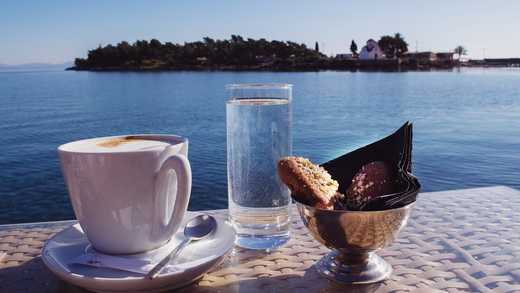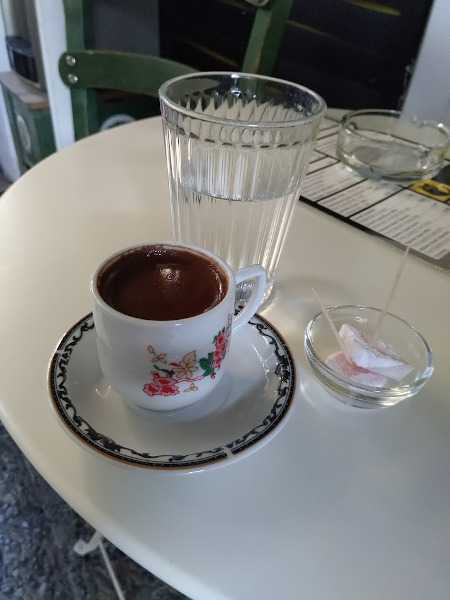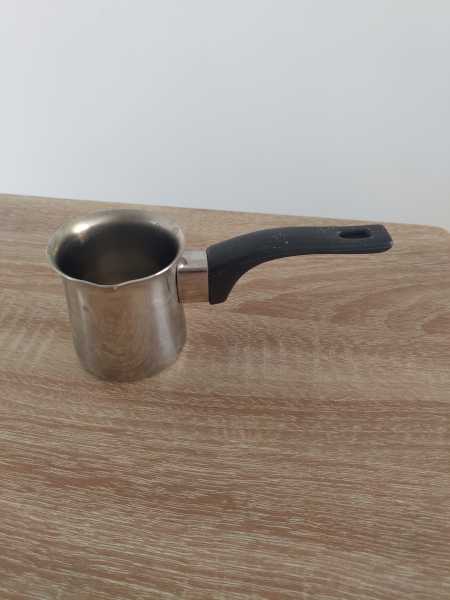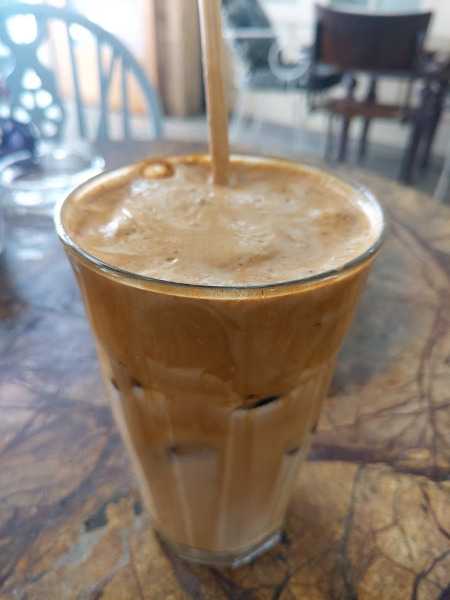How To Order A Coffee In Greece (Greek Language)
 Written byFergus O'Sullivan
Written byFergus O'Sullivan- Read time7 mins
- Comments0

Whether you’re learning Greek or just visiting the country, you’ll quickly find that coffee is a huge deal for the Greeks.
Cafes and bars sell the bitter drink all through the night, and more often than not you’ll see empty coffee cups on tables rather than drained beer glasses.
Unsurprisingly, Greece and Cyprus are home to a huge coffee culture which has influences from all over the world to create a mix that is uniquely Greek.
If you make Greek friends, you’ll quickly get used to the phrase πμε καφ; (“shall we go for coffee?”) as that’s where most people meet - in the coffee shop.
In this guide, I’ll show you how to order coffee in Greek so you can partake in this culture yourself.
I’ll assume you’re already familiar with the Greek alphabet, but other than that you don’t need any knowledge of the Greek language, though knowing how to say hi in Greek will likely come in handy.
How to say coffee in Greek
The word coffee in the Greek language is καφ (kafe).
To specify Greek coffee, you can say ελληνικ καφ (elleniko kafe) or just ελληνικ (elleniko).
For decaf, say ντεκαφεν (ntekafeiné).
Greek coffee

When you mention Greece and coffee in the same sentence, most people will automatically think of Greek coffee, the pitch-black, thick coffee served in tiny cups.
This boiled coffee is popular throughout the region, from the top of the Balkans through to Greece, Turkey, Cyprus and even parts of the Levant and North Africa.
Every country and town has its own way of preparing and serving it, too: in Turkey and Arab countries, for example, they usually add spices like cardamom to it.

It’s made in a small metal pot, called a μπρκι in Greek.
You put the water, coffee grounds and optionally sugar in and bring it to the boil.
The result is a thick coffee that has a lot less caffeine than filter coffee.
The taste generally is a lot smoother, too.
The only downside is that you need to get used to the texture of the boiled coffee grounds, but that will happen quickly enough.
You should also refrain from draining your cup as the bottom contains all the grounds, a very unpleasant surprise if you’re not careful.
How it’s served
Usually when you go for coffee in Greece, you’ll go to either a cafe or a καφενεο (coffee house).
This latter type is usually more traditional and in villages especially it’s really only men that go there.
Wherever you end up, you’ll get a nice glass of water with your coffee and also be served some sweets like λουκουμι, what we’d call Turkish delight.
Ordering Greek coffee
Ordering coffee in Greek is very easy — in fact, Greek isn’t as hard as you think — you just need to remember a few key things when you make your way to a καφενεο.
First is what it’s called: Greek coffee in Greek is ελληνικ() καφ().
If you just order “coffee”, all you’ll be asked is τι καφ (“what coffee?”) because there are just so many kinds — we’ll get to that later.
Besides knowing what it’s called, you also need to know how you want it.
There are specific words for this that you just need to know.
What we call black coffee, so no milk, no sugar, is called σκτο, which means “plain.”
Don’t use the actual Greek word for black, μαρο, as it makes no sense in this context.
If you’d like a bit of sugar (one teaspoon, say), you can ask to have the coffee served μτριο, which means “medium.”
If you want it sweeter, you can ask for the coffee to be “sweet”, γλυκ, but note that this could mean that it will be served extremely sweet depending on where you are.
Usually, γλυκ is taken to mean two teaspoons of sugar, but in one καφενεο I visited I saw the proprietor shovel three heaping teaspoons in, so your mileage may vary — the coffee was still pretty good, by the way.
Let’s put together a simple order to get us started:

Μπορ να χω ναν ελληνικ καφ σκτο, παρακαλ;
Μπορ να χω… παρακαλ is just a polite phrase that means “can I have… please?”
It’s pretty useful to know in any situation.
The form of ελληνικ καφ changed a bit because we put it into the accusative, but that should be easy to remember.
Remember that the way you want the coffee goes behind the coffee!
Let’s order another one, only bigger this time:

Μπορ να χω ναν ελληνικ διπλ γλυκ, παρακαλ;
In this example, you ordered a double, or διπλ, which is twice the volume; it’s not double the sweetness!
These come in much bigger cups, usually, and drinking a whole one, especially with sugar, will keep you going for a while.
Greek frappé

Boiled coffee isn’t the only typical Greek coffee you can order.
There’s also a really nice blended and foamy cold drink, called frappé (φραπ).
Unsurprisingly, the word originally comes from French, but it’s a true Greek coffee.
It’s a nice way to cool off on a hot day and there’s nothing that says summer quite like drinking a frappé on the beach.
Ordering a φραπ can be a bit of an adventure, though.
As with Greek coffee, you can order them either as μτριο or γλυκ, but you can’t order them σκτο.
If you want it without sugar you have to say χωρ ζχαρη.
This is because there are three kinds of φραπ: with water (λο νερ), with milk (λο γλα), or half and half (μισ και μισ). Saying σκτο would be confusing.
The one that’s all water is pretty, well, watery, and should be a hit with anybody that likes iced espresso.
The all milk one is great for anybody that likes iced lattes or iced cappuccino, while the half and half is for people that like it milky but not too milky.
Ordering one looks a bit like this, this is how I personally like it best:

Μπορ να χω να φραπ λο γλα και μτριο, παρακαλ;
Other coffees
Naturally, if you go to a cafe or even an international chain like Starbucks or Costa Coffee, you can order other things than just Greek coffees.
Generally speaking, there’s nothing special about these, except that you can order iced coffees μτριο and γλυκ.
Warm coffees, like Americanos, espressos and cappuccinos are served the same way they are all over Europe, with sugar sachets and a biscuit.
Filter coffee and Americanos may also be served with a small jug of milk, depending on where you are.
Confusingly, in these more international places, you just use English terms to order, so like this:

Μπορ να χω να iced latte μτριο, παρακαλ;
It’s an odd mix of English and Greek, but it works pretty well.
However, things like espresso and cappuccino have been Hellenized, though “cappuccino” gets some interesting spelling depending on where you are.

Μπορ να χω να καπουτσνο, παρακαλ;
Ordering more than one coffee
To finish up, let’s see what ordering more than one coffee looks like as it can get a little complicated..
For example, say you’re in a cafe with a small group and you’re doing the ordering for everybody, simply because your Greek is just that good.

Μπορ να χω ναν ελληνικ καφ μτριο, δυ φραπ λο γλα χωρ ζχαρη και ενα εσπρσο, παρακαλ;
Πμε καφ;
I know, it’s a lot to take in, but you’re in luck: Greek people are pretty chill and are very patient with learners.
Try and use some of the words and phrases from this guide, and before you know it you’ll be drinking some of the best coffee in the world, and it will be served with a smile.
 Grab the link to this article
Grab the link to this article